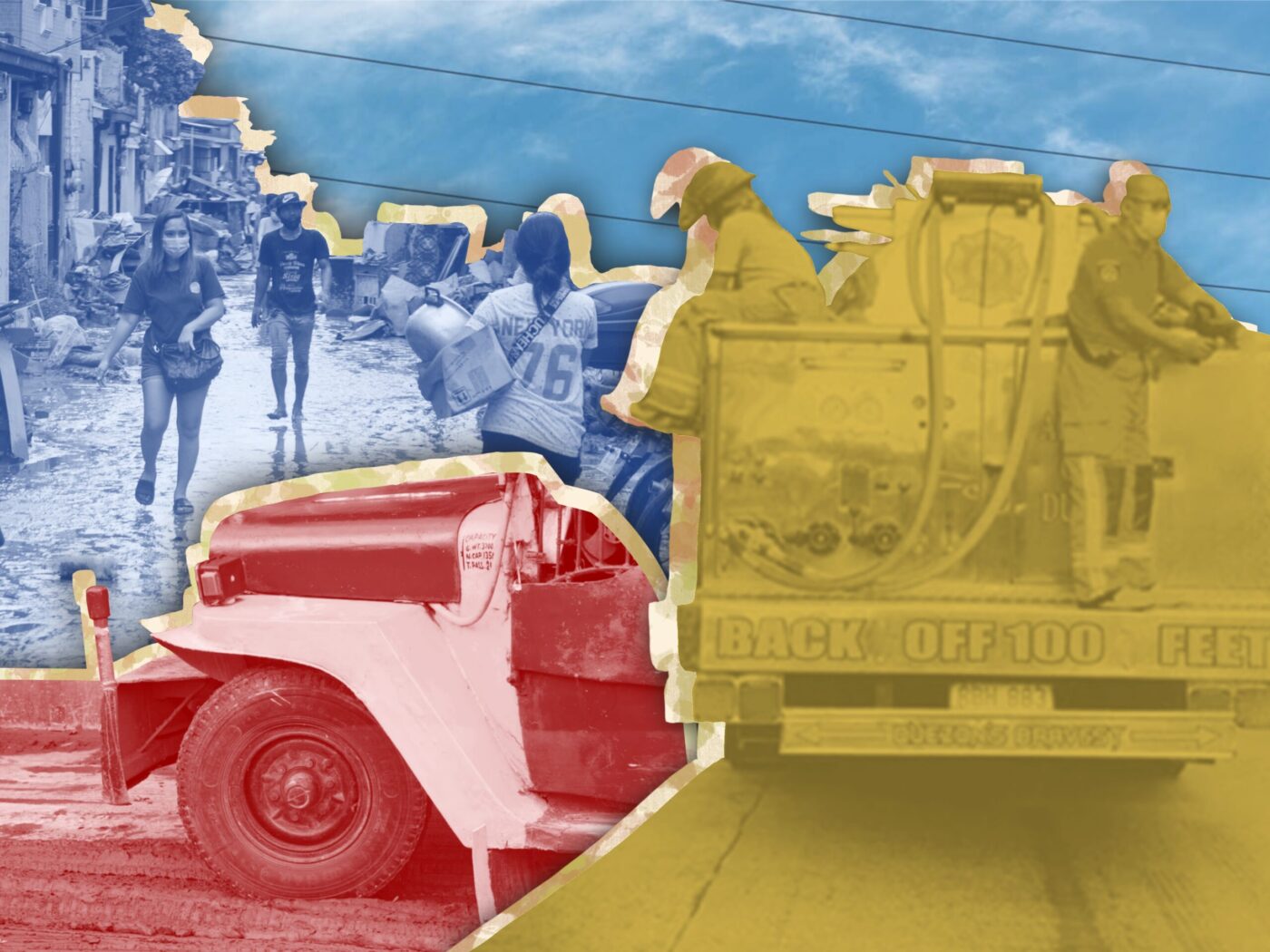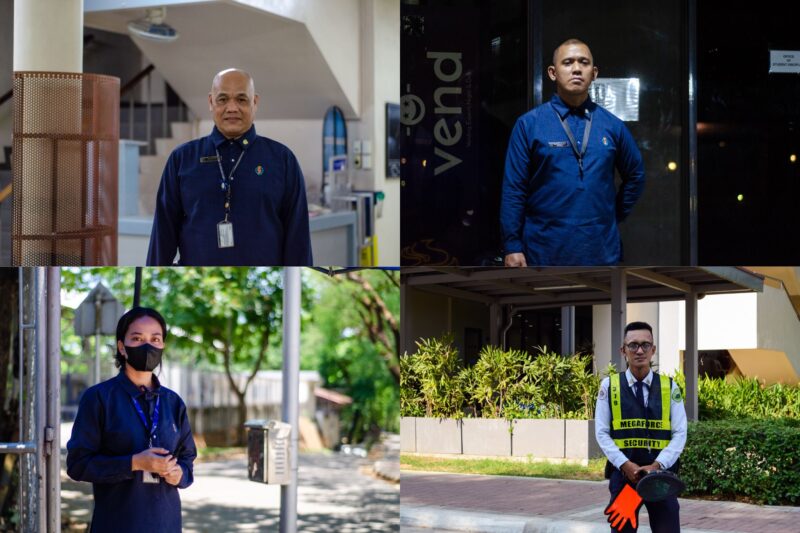In a country that puts disaster risk reduction and management on the back burner, rescue operation teams serve as the frontliners, valiantly saving lives even at the expense of their own.
PITCH BLACK darkness engulfs you. The wind relentlessly bangs on your windows. Soon enough, the floodwater gushes in. Alarmed and desperate, you climb up the highest point of your home—the roof—where you find the rest of your neighbors desperately shouting for help. Never mind the soaked furniture and appliances. In these vulnerable times, nothing matters besides survival.
From a distance, people in personal protective equipment and flashlights approach you like your only sliver of hope. These unsung heroes brave the storm and risk their lives to save others, come hell or high water.
Mission: Impossible or Possible?
Surrounded by enormous bodies of water, the Philippines is a hotspot for natural disasters, weathering around 20 typhoons per year. One of the most devastating was Typhoon Yolanda, which inflicted Php 95.48 billion worth of damage in 2013. Given the recurrent stories of destruction and casualties, the significance of disaster preparedness has become more salient in recent years.
As the disasters that the country faces evolve, the call for rescuers also escalates. Essentially, some step down from their jobs to do what they love: volunteering. Erwin Valdez, the Local Disaster Risk Reduction and Management Officer II of the Quezon City Disaster and Risk Reduction Management Office (QCDRRMO), used to work at a hospital as a registered nurse before entering the Quezon City Emergency Medical Services unit in the latter part of the 2000s. Upon realizing that he enjoyed field work compared to the hospital setting, Valdez eventually became a volunteer for the Emergency Operations Center unit.
According to Valdez, disaster risk reduction and management (DRRM) was institutionalized in the aftermath of Typhoon Ondoy in 2009, when Regions I, II, III, IV-A, IV-B, V, Cordillera Administrative Region, and the entire National Capital Region was submerged in floodwater. Since then, the Republic Act 10121 or the Philippine Disaster Risk Reduction and Management Act of 2010, was established to provide an all-hazards, multisectoral, and community-based approach to DRRM.
Collaboration, Valdez notes, is central to the operations of DRRM-related work. The QCDRRMO is further divided into four sections: administrative and finance, research and planning, training and logistics, and operations and warning. Each section works together on a pre-disaster risk assessment conducted before the landfall. After this, the operations and warning section monitors and evaluates information for related emergency services, such as medical or search, rescue, and retrieval.
As the hub of information and coordination, the QCDRRMO’s next task is to make the data accessible to the public masses through the contextualization of data and usage of both indigenous and online means of dissemination. They also invite multiple stakeholders, barangays, local executives, and decision-makers to discuss the proposed course of action. To further account for the large area of Quezon City, the QCDRRMO taps into the potential of social media broadcasting to reach a wider audience, especially considering that five out of 142 barangays are flood-prone.
Despite rigorous and comprehensive preparations, the events that will ensue can be unpredictable. “We can never prepare enough,” Valdez remarks.
What lies in each wave
Compared to earthquakes or fires, storms have an estimated “d-day,” predicted with the aid of weather forecasting tools. On the countdown toward the impending deluge, rescuers review their battle plans and mentally prime themselves for what lies ahead.
Valdez shares that the main rescue method in the landlocked, low-lying areas of Quezon City is swift water rescue. A wealth of videos online demonstrate swift water rescue training, including rows of men dunking their heads in swimming pools and decoy officers feebly gliding with the violent currents. High-angle operations require rescuers to climb billboards while low-angle operations require rescuers to plunge into floodwater and scavenge for signs of life.
At the top of their priority list are vulnerable sectors: persons with disability, senior citizens, pregnant women, and children. However, Valdez notes that the goal has always been to rescue everyone.
Valdez confesses that he cannot recall a particular instance in his mission that stood out for him. Those that do, however, are distressing. “Iba ‘yung nadatnan mo na nawala na, kaysa ‘yung nahawakan mo na buhay pa pero nawala on your watch (Stumbling upon a corpse is different from witnessing someone perish on your watch),” he adds.
Last year, the onslaught of supertyphoon Karding claimed the lives of five rescuers in Bulacan. Eager to participate in the mission, they had assured people that they would be there to help, moments before they met their demise. All five rescuers left behind wives and children, a harsh reality that has kept Valdez—a father of three young children—away from on-the-ground work after his youth.
Such traumatic incidences necessitate rescuers to undergo institutionalized Mental Health and Psychosocial Support. “Every after [a] run, kapag may cases na namatay, [mag-uusap-usap kami tungkol sa] nangyayari (Every after a run, if someone passes away, we process the event among ourselves),” Valdez says.
Head above water
All jobs have their fair share of risks—but Valdez thinks that some are just greater than others. The tragic plight of the rescuers does not end when the storm does, as the rescuers’ woes are intrinsically tied to how undervalued the DRRM sector is in the country, despite their tireless sacrifices.
Although Quezon City is relatively “gifted with funds,” Valdez mourns the fact that the majority of their responders are still contractual. “Sometimes, they gather experience here then fly abroad because they receive higher salaries there,” he explains in a mix of English and Filipino.
While labor groups appreciated the condolences of local officials and senators, they demanded much larger action from policymakers. “Their [deaths] should be a wake-up call to our lawmakers to end contractualization in the public sector,” the Public Service Labor Independent Confederation had said in their statement. They requested the enactment of the Security of Tenure Bill which seeks to prohibit “labor-only” contracting.
Regularization would let employees receive health insurance, which Valdez considers a consolation that the family of the rescuers can benefit from—if anything unfortunate transpires. The bill, however, was vetoed back in 2019.
Ultimately, search and rescue operations are a team effort, as Valdez notes. The DRRM program of the country strives to uphold the same perspective. Alfredo Lagmay, Executive Director of the University of the Philippines Resilience Institute, echoed the holistic approach stipulated in RA 10121 in his interview with CNN Philippines last December. He calls for the whole community to participate in anticipatory planning.
To ensure that each sector of the community is represented, DRRM involves not just the local government but also farmers, educators, businessmen, and many more. Furthermore, it must be proactive and preventive—rather than reactive—especially when the line between life and death can so easily be washed away.







